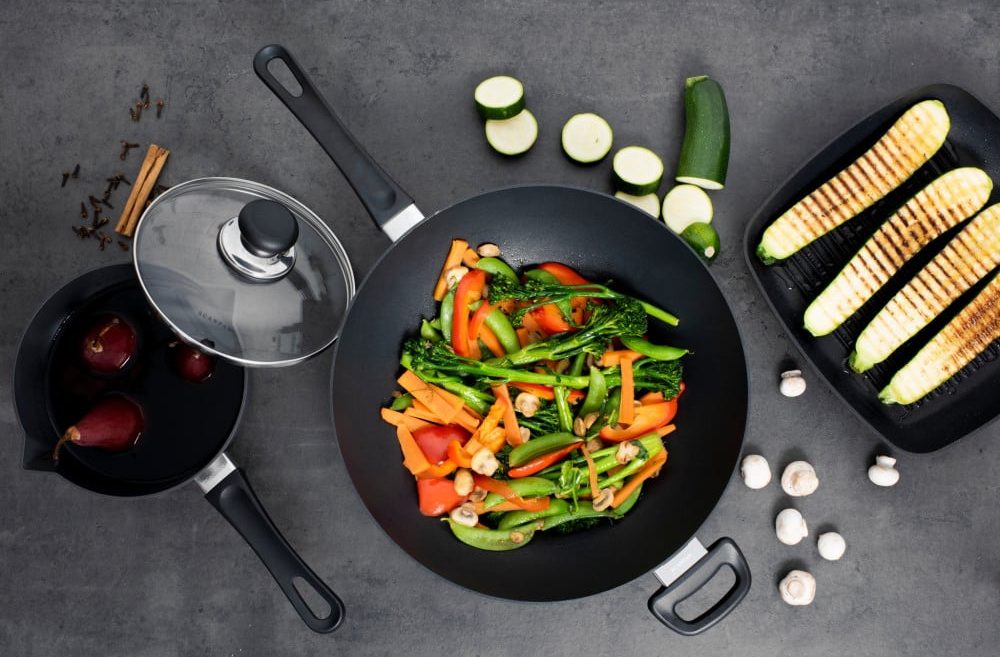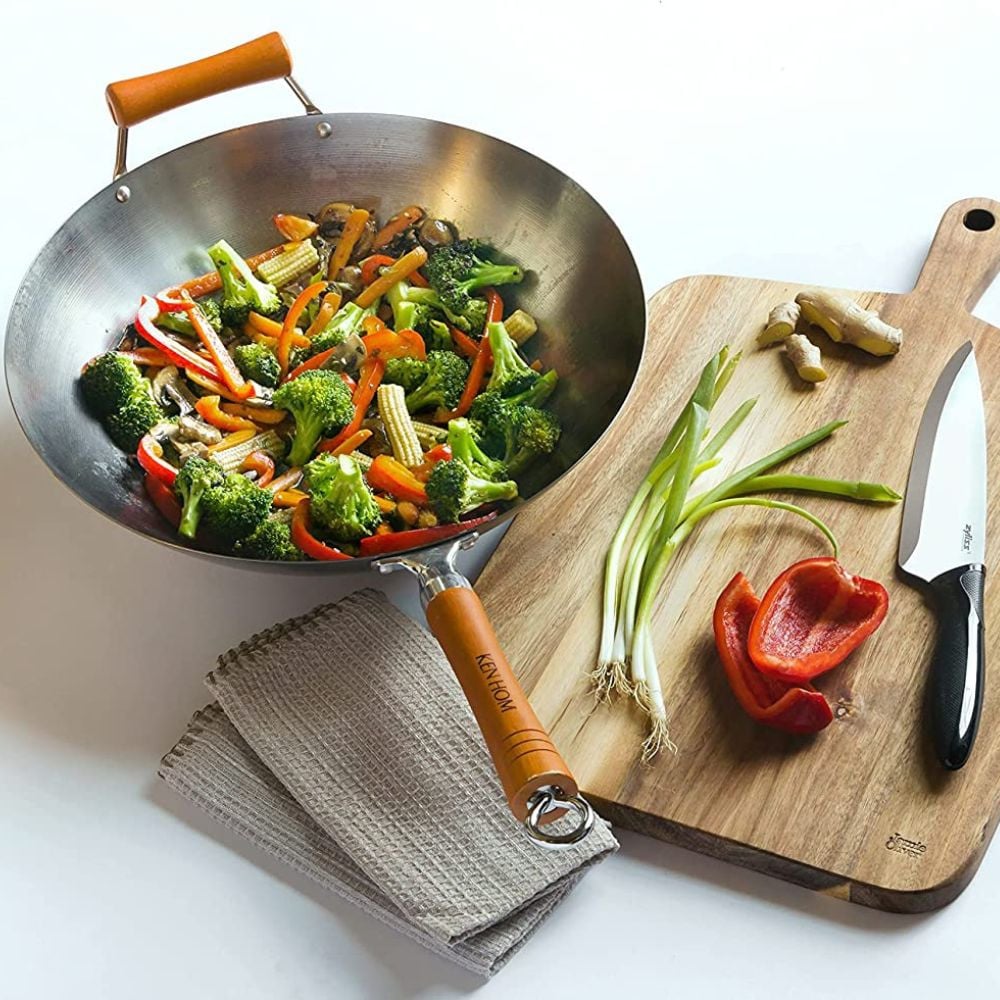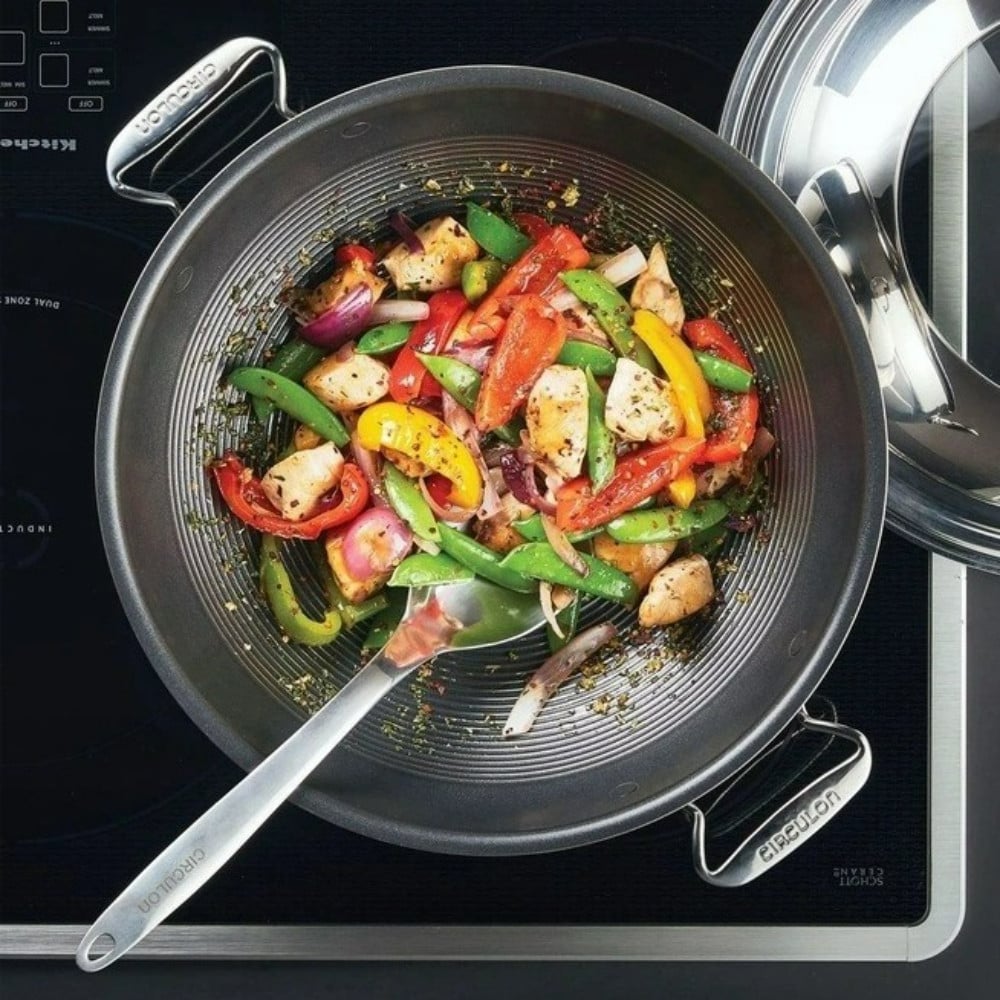
What is special about a wok?
Looking to level up your cooking game? Then it's time to grab a wok and stir-fry like a pro! This versatile pan has been the secret weapon of Asian chefs for centuries, delivering intense heat, lightning-fast cooking times, and mouthwatering flavours. Whether you're whipping up a quick weeknight meal or hosting an elaborate dinner party, a wok is the ultimate kitchen essential that can take your culinary creations from mediocre to magnificent. So, what makes the humble wok so unique? Let's dive in and discover why every home cook should have a trusty wok in their arsenal.
Why choose a wok instead of a pan?
Shape
What sets a wok apart from a regular frying pan? Well, firstly, its shape. The wide and deep bowl-like structure allows ample surface area while keeping food within its sloping sides. This means you can easily toss and flip your ingredients without fear of spillage. In contrast, a frying pan typically has a flatter surface and straight sides, making it more challenging to maneuver food with the same level of finesse as a wok.
The concave shape of the wok excels in conducting heat evenly across the entire surface of the cookware, ensuring your ingredients cook quickly and uniformly, producing perfectly seared meats and crisp vegetables. In contrast, a frying pan's shallower design makes it less efficient in heat distribution, which can lead to uneven cooking results.
Material
Traditionally made from carbon steel or cast iron, a wok's high heat capacity and even heat distribution make it particularly suited for flash stir-frying at high temperatures, a task that regular frying pans might struggle to replicate consistently. The wide and deep wok shape facilitates efficient tossing and flipping of ingredients, enhancing your culinary experience and allowing you to achieve that sought-after wok hei flavour.
There's more to a wok than just stir-frying. Its versatile nature lends itself well to steaming, deep-frying, braising, smoking, and even boiling! So whether you're whipping up some dumplings or trying your hand at creating authentic Chinese hot pot dishes – having a trusty wok by your side opens up endless possibilities in the kitchen.
Cast iron vs. carbon steel vs. stainless steel vs. non-stick
Cast iron
Cast iron woks are known for their excellent heat retention and distribution. They can withstand high temperatures and provide even heating throughout the pan. This makes them ideal for searing meat or stir-frying ingredients quickly. However, they require proper seasoning and maintenance to prevent rusting.
Carbon steel
Carbon steel woks are lightweight yet durable. They heat up rapidly and evenly, allowing you to achieve those coveted crispy vegetables in no time! With proper seasoning and care, carbon steel also develops a natural non-stick patina over time.
Stainless steel
Stainless steel woks offer durability and resistance to corrosion. They are easy to clean and maintain but may not distribute heat as evenly as cast iron or carbon steel options. Stainless steel is often preferred by those who want a versatile cookware option that can handle various cooking techniques.
Non-stick
Non-stick woks, including those like the Tefal wok have a convenient coating that prevents food from sticking while requiring less oil during cooking. This makes them great for low-fat or delicate dishes like eggs or fish fillets. However, they may not be suitable for high-heat stir-frying due to potential damage to the non-stick surface.
Next Read: What Are the Best Woks in Australia?




